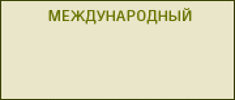articles
|
№ 5(113)
30 october 2024 year
Rubric: Researching of processes and systems Authors: Volkova V., Loginova A., Maksimov M., Shirokova S. |
50 years ago, in 1974, A. A. Denisov proposed a theory based on a dialectical generalization of the laws of functioning and development of systems of various physical natures, which he called the theory of the information field. The theory is based on the use of the apparatus of mathematical field theory to explain the laws of information reflection, which determined its name. Based on this theory, significant results were obtained for the study of motion control processes in continuous spatio-temporal and arbitrarily evolving situations. The use of this theory for the study of open distributed information systems seems promising. Subsequently, a discrete version of the theory was developed, which allows explaining the process of reflection and transformation of information and became the basis for the development of a number of practical applications, some of which are given in this article. This article characterizes the prerequisites for the emergence of this theory, the main ideas and concepts of the theory and its contribution that, over the 50 years, scientists and students united by the Scientific and Pedagogical School “System Analysis in Engineering and Control”, have made on the basis of this theory in the development systems theory, computer science and other sciences of systems. Information is provided on the application of A. A. Denisov’s ideas and the development of models for specific applications based on them. The authors of the article, including Anatoly Alekseevich’s students, was developing, appliing and are currently developing models of information theory of A. A. Denisov, proving the usefulness of theoretical knowledge for solving practical problems. Continue... |
|---|---|
|
№ 5(113)
30 october 2024 year
Rubric: Information processes modeling Authors: Kirillova E., Minin V., Puchkov A., Yartsev D. |
A neuro-fuzzy model of resource provision of innovative activity of an industrial enterprise is proposed. The model implements a two-stage procedure for describing and managing innovative activity of an industrial enterprise: at the first stage, interaction resources are classified based on the supplemented VRIO analysis of the interaction profile; at the second stage, an innovative activity strategy is selected. The neuro-fuzzy model of resource provision is based on stacking of private machine learning models, such as the k-nearest neighbors method, random forest, and multilayer perceptron. The classification results of private models are combined using a trained tree of fuzzy inference systems that performs the final classification, which ensures an increase in its accuracy compared to individual private models. A distinctive feature of the model is the use of a fuzzy logical inference system to assess the probability of resource availability used in planning the need for it, which allows taking into account expert judgments as input data. Testing of the neuro-fuzzy model, carried out in the MatLab software system using the example of solving the problem of assessing the resource provision of an innovation process during the interaction of a regional instrument-making enterprise with one of the counterparties, demonstrated the model’s performance and high accuracy of classifying the resources of innovative interaction. Continue... |
|
№ 6(114)
12 december 2024 year
Rubric: Models and methods Authors: Sokolov A. M., Chernovalova M., Prokimnov N. |
The control of complex technical objects is often hampered by the lack of information necessary to build probabilistic models of the control process. An alternative approach is based on models in which elements of fuzzy set theory are used to identify an effective control strategy from the point of view of the selected criterion. The disadvantages of fuzzy situational models include the subjective nature due to the expert data used for their construction, as well as the inability to distinguish in sufficient detail the reactions of an object to the same control actions, which is most clearly manifested in complex technical objects, the functioning of which is influenced by many situational factors. The paper proposes an approach to the construction of fuzzy situational models based on precedents and allows for the ambiguity of the transition with the same control action from one situation to another in cases where it is impossible to ensure the stability of both the uncertainty factors of the external environment and the parameters of the object itself. The method of constructing models based on the consideration of accumulated historical data regarding the operated object is described. This principle largely eliminates the subjectivity inherent in expert methods. In addition, programs implementing the method are distinguished by significantly shorter execution time, which is important for process control systems. A Python program has been developed for conducting computational experiments. The verification, which was carried out using the example of a control system for a conveyor-type roasting machine, confirmed the operability of the proposed method and model. Continue... |
| A probabilistic model of the dynamics of sales of goods on the marketplace, which takes into account the impact of delivery duration on the consumer’s decision to purchase this product, is proposed. It was assumed that the quantity of goods on the marketplace is unlimited, and consumers, all other things being equal, buy goods from sellers offering the shortest delivery time. In addition, it was assumed that each consumer purchases only one unit of the product. The cases of free and paid delivery of the product to the consumer are considered separately, as well as the general case where there are consumers choosing both free and paid delivery on the marketplace. The following economic factors were used as random variables determining the dynamics of goods sales: moments of consumers’ purchasing activity, duration of delivery and maximum possible duration of delivery for a consumer, purchasing power, price for goods, number of sellers and consumers of goods on the marketplace. It is shown that the quantity of goods sold on the marketplace by a certain moment of time is a random variable, the true value of which at a large number of consumers differs little from the expected value of this random variable. The analytical expression for time dependence of the expected value of the quantity of sold goods for the cases of free and paid delivery, as well as in the presence of both types of delivery on the marketplace is found. Numerical modeling of this dependence for all considered types of delivery has been carried out. In this case, we used partial laws of probability distributions of the above mentioned economic factors, simulating certain behavior of consumers and sellers on the marketplace. In addition, in the case of paid delivery the dependence of delivery cost on its duration found on the basis of empirical data was used in numerical modeling. We analyzed the influence of the parameters of the probability distribution law of delivery duration on such characteristics of sales volume dynamics as the maximum possible sales volume and the speed of approaching the expected value of the number of sold goods to the maximum sales volume. Continue... | |
|
№ 6(114)
12 december 2024 year
Rubric: Models and methods Authors: Korepanova V., Anisimov A., Nechaev A., Trubin A. |
Correct classification of land plots by their types, for example, such as forest, agricultural, urbanized, water bodies, and others, is relevant for remote sensing of the Earth and the development of geoinformation technologies. The accuracy and reliability of the results of such categorization are of paramount importance for the efficient use of natural resources, rational land use, and environmental monitoring. The article presents an approach to solving the problem of categorizing land plots based on satellite images by applying a modified standard model of a convolutional neural network. The main attention is paid to the modification of the network architecture in order to improve the accuracy of land plot classification. The authors propose an approach to training and optimizing the network in order to solve this problem. The stages of data preparation are discussed in detail, including preprocessing satellite images, annotating them, and creating high-quality training samples. The presented approaches to network training and optimization include the use of modern regularization techniques, adaptive learning methods, and class balancing strategies, which allows efficient processing of both large amounts of data and more limited sets of specific information. To test the approach’s operability and obtain the values of quality indicators, experiments were conducted to train and test the model on various sets of satellite image data. The results of the experiment suggest that the accuracy of categorization achieved on the basis of the created model meets the requirements of the Federal Service for State Registration, Cadastre and Cartography for studying remote Territories for the suitability of land for their rational use, and the proposed method can be used to solve practical problems. Continue... |
|
№ 6(114)
12 december 2024 year
Rubric: Models and methods Authors: Bulygina O. V., Ledneva O., Yartsev D., Zedaina A. |
One of the promising ways to reduce the dependence of domestic industry on the supply of critical goods, components and raw materials necessary for the construction and effective functioning of multi-stage production and technological chains is to intensify processes for their import substitution, including through various measures of state support. However, the critical need for a wide range of products requires the selection of the most “promising” projects for inclusion in program-target documents using a set of criteria (sometimes even non-financial). As a result, there arises an urgent scientific and practical task of developing approaches to the formation of multi-projects (a set of projects) that can qualify for state support under various programs to reduce import dependence and overcome the technological backwardness of Russian industry, based on the use of modern economic and mathematical methods. In the application to this task, a multi-project can be represented as a “set” (unrelated projects), a “chain” (rigid sequence of projects) or a “network” (projects with complex logical-temporal interrelations). The specifics of each type determine the conditions and impose restrictions on the processes of selecting components for inclusion in their composition, which consists of finding the best combination of projects and/or programs, i. e., it is reduced to a task of conditional multidimensional optimization. In the absence of a requirement to find a “strictly optimal” composition, one can use metaheuristic methods that are capable of finding solutions close to these in an “acceptable” time. Among them, the largest and most well-known class are swarm intelligence algorithms based on the principles of collective behavior of a population of living organisms. To form the composition of multi-projects, the article proposes to use algorithms inspired by the collective behavior of a pack of wolves (Grey Wolf Optimizer) and a school of fish (Fish School Search) to satisfy their food needs. To increase the efficiency of their use for solving the task of finding the best composition of a “set” and “network” of projects, their hybridization with fuzzy logic methods (in particular, fuzzy clustering and fuzzy-logical inference) was proposed. Continue... |



